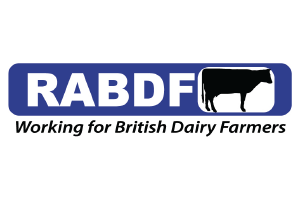Provided by Tim Brigstocke
1. It is pretty clear that Defra officials are having to learn what the new team of Ministers are wanting to achieve and thus much less activity than expected.
2. Defra however have announced funding of £168 million for farmers to drive innovation, support food production, improve animal health and welfare and protect the environment. Most of this will be done under the Sustainable Farming Incentive. Not sure that this is new money!
3. Scotland is to introduce a scheme whereby livestock keepers can claim £250 for specific interventions such as veterinary screening of livestock for certain diseases.
4. The Welsh Government has introduced a new Farming Connect programme which will run until March 2025.It will provide access to the latest innovations and help develop farm businesses transition to the Sustainable Farming Scheme. A total of £22.9 million has been committed.
5. Data from Strutt & Parker shows that the average price of arable land in England rose by 12% in 2022 to £26,193/ha, £1482/ha above the previous high in 2014/15. The average price of pasture rose by 13% to £21,003/ha. A total of 31,332 hectares was publicly marketed, the most since 2018. 85% of land sold for at or more than the guide price.
6. The Bank of England base rate has increased by 0.5% to 4%, the highest rate for 14 years whilst sterling weakened marginally against the Euro this month and significantly against the US dollar. The Euro/Sterling exchange remained volatile. Crude oil prices also entered a volatile period in February, with two distinct fall/recovery cycles in the month.
7. The UK average "all milk" price for December, reported this month, was 51.51 pence per litre, an increase of 0.45 p/l above the November average and 17.00 pence per litre above the price a year ago and more than 19 p above the rolling 5-year average of 32.47 p/l. Since Jan, milk prices appear to have peaked and have started to fall. The EU average for December was 51.40 pence per litre, down 0.29 from November's 51.69 but 15.36 p/l above the price a year earlier.
8. APHA has reported that phase 2 of field trials for a cattle vaccine and a new skin test for bovine TB have begun. Five farms with 600 animals will have 300 vaccinated with CattleBCG while the others will receive a placebo.
9. As at Dec 1, there were 5 million cattle and calves on farms in England, almost unchanged from a year earlier. The female breeding herd (dairy and beef) accounts for 46% of all female cattle. The dairy breeding herd fell by 26,000 to 1.1 million whilst beef breeding herd fell by 18,000 to 623,000. Since 2018 there has been a fall of 3.7% in the dairy herd and 11% in the beef herd.
10. Despite the current trends in the UK, according to a research paper in Nature they forecast that global antibiotic use in farming is set to grow by 8% between 2020 and 2030. The highest
growth is forecast in Pakistan with usage in Australia growing by 16%, Brazil 13% and Thailand by 13%.
11. According to BCMS data, calf registrations to dairy dams in the three months to Dec reached 355,621 head, up marginally on a year previously and the rolling 5-yeat average.
12. During Dec, 1.172 million litres of milk were available to processors, down 3.4% on November. At the latest Global Dairy Trade auction on 7 Feb, the overall price increased by 3.2%.Butter was up 6.6% and whole milk powder by 3.8% but skim milk powder was down by 0.5%
13. Kantar data reveals that, during Jan, over a million fewer households bought meat-free products compared to a year earlier and 288,000 fewer households bought dairy-free products. In the first three weeks of January, meat free sales were down 12.9% and dairy-free products down 2.6%. While 7% of shoppers were committed to taking part in Veganuary 2023, by mid-month 70% had returned to their normal diets with 40% claiming vegan products were too expensive and 40% were failing to enjoy the products.
Kind regards
Tim Brigstocke
Policy Director.
